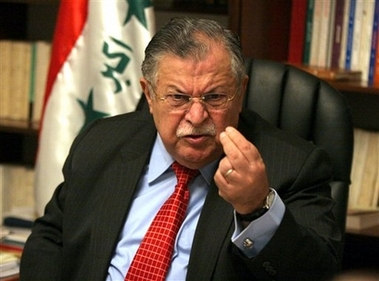 An artist's rendering of the first flying mammal, named Volaticotherium antiquius, meaning "ancient gliding beast." Image Credit: Chuang Zhao and Lida Xing
An artist's rendering of the first flying mammal, named Volaticotherium antiquius, meaning "ancient gliding beast." Image Credit: Chuang Zhao and Lida XingMongolian Flying Mammal Fossil Discovery
The mammal fossil evidence discovery was made last year in Inner Mongolia (a region in north China). Farmers had found the delicate fossil, embedded in sandstone, and brought it to the attention of the Institute of Vertebrate Paleontology and Paleoanthropology in Beijing.
The discovery was written up in the most recent edition of the journal, Nature and was first thought to be a rodent in that the earliest recorded discoveries (30 million years ago) had been bats.
The fossil has been dated back to about 125 Million years ago and is now the first recorded evidence of mammalian (gliding) flight.
Excerpts from The New York Times -
Flying Mammal Found From 125 Million Years Ago
By JOHN NOBLE WILFORD, NY Times - Published: December 13, 2006
Scientists have discovered an extinct animal the size of a small squirrel that lived in China at least 125 million years ago and soared among the trees. It is the earliest known example of gliding flight by mammals, and the scientists say it shows that mammals experimented with aerial life about the same time birds first took to the skies, perhaps even earlier.
From an analysis of the fossil, the researchers concluded that this gliding mammal was unrelated to the modern flying squirrel and unlike any other animal in the Mesozoic, the period best known for dinosaurs living in the company of small and unprepossessing mammals. They announced today that the species qualified as a member of an entirely new order of mammals.
Richard L. Cifelli, a paleontologist at the Oklahoma Museum of Natural History in Norman who reviewed the findings for publication, said this "wholly unexpected diversity of something adapted for gliding at this early time is absolutely astonishing."
Until a couple of years ago, Dr. Cifelli said, most scientists held the view that such early mammals were simple shrew-like creatures that cowered in the shadows of the dominant dinosaurs, and now "this adds a new dimension to our knowledge of early mammals."
Until now, the earliest identified gliding mammal was a 30-million-year-old extinct rodent. The first known modern bat, which is capable of powered flight, dates to 51 million years ago, but it is assumed that proto-bats were probably gliding much earlier.
Archaeopteryx, the earliest known bird, lived about 145 million years ago, though scientists are not sure if it could flap its feathered wings in fully powered flight. But it lived about the time birds did take off in flight.
----
On a visit there late last winter, Jin Meng, an associate curator of paleontology at the American Museum of Natural History in Manhattan, examined the specimen. He saw the sharp and diverse teeth of an insectivore. He then detected striations in the fossil - clear traces, he said, of hair covering a stretch membrane from fore to hind limbs that was the airfoil to support and give lift for the animal to glide.
"This was just totally out of nowhere," Dr. Meng said in an interview at the museum this week, while pointing to the fossil’s telling features.
In the journal report, Dr. Meng and colleagues wrote, "This discovery extends the earliest record of gliding flight for mammals at least 70 million years earlier in the geological history and demonstrates that mammals were diverse in their locomotor strategies and life styles."
----
A paleontologist not involved in the research, Zhe-Xi Luo of the Carnegie Museum of Natural History in Pittsburgh, said the discovery contributed more evidence that "mammals started the invasion of diverse niches long before the extinction of dinosaurs," which occurred 65 million years ago.
Only last February, Dr. Luo reported finding fossils of a swimming, fish-eating beaverlike animal that lived in China 164 million years ago. The discovery was made at the Daohugou site, where the gliding mammal was uncovered.
"The semi-aquatic mammal Castorocauda and the new gliding mammal," Dr. Luo said, "literally stretch the boundary of paleontologists’ imagination about what would be possible for the earliest mammals."
Dr. Meng's team said tests produced inconsistent dates for the new specimen, ranging from as recent as 125 million years ago to as ancient as 164 million. The older date may be more probable, other scientists said, and would put the aerial life of the mammal even earlier than known bird flight.
In their study of the fossil, Dr. Meng and his associates noted that the mammal was about half the length of the squirrels frolicking in Central Park, across from the museum. The animal had a long, stiff tail that served as a stabilizing rudder for gliding flight. The impressions of fur on the gliding membrane, or patagium, and other parts of its body preserve some of the most ancient examples of mammalian skin covering.
The paleontologists surmised that the gliding behavior enabled the small animal to travel from tree to tree in relative safety, above most of its predators, and hunt insects over a wider area.
"We have very little fossil record of mammalian flight, and suddenly this one comes along at such an early time," Dr. Meng said. "Now the question is, what happened to this group between then and now?"
Read All>>





















